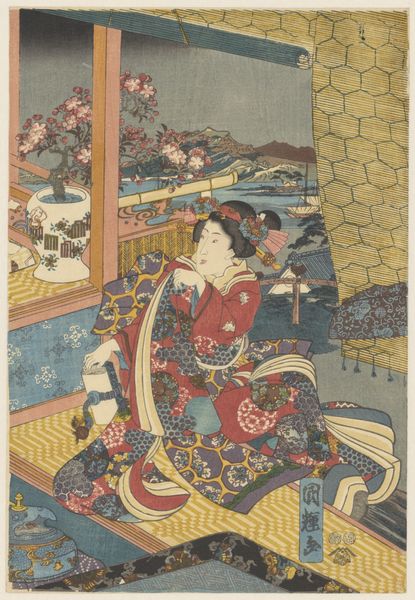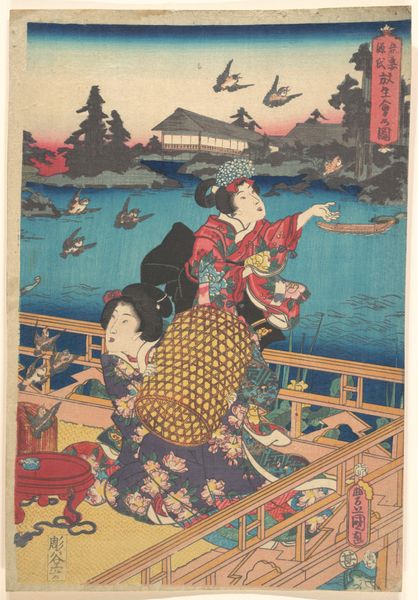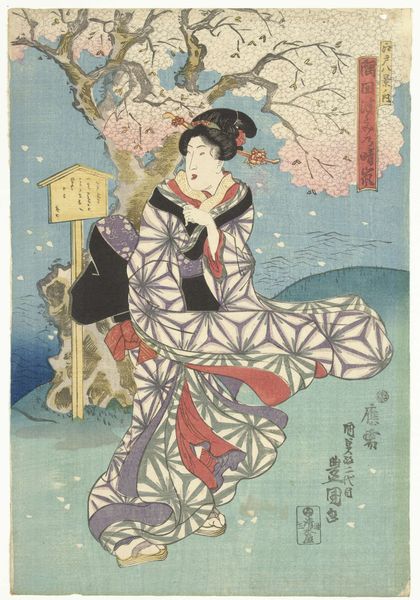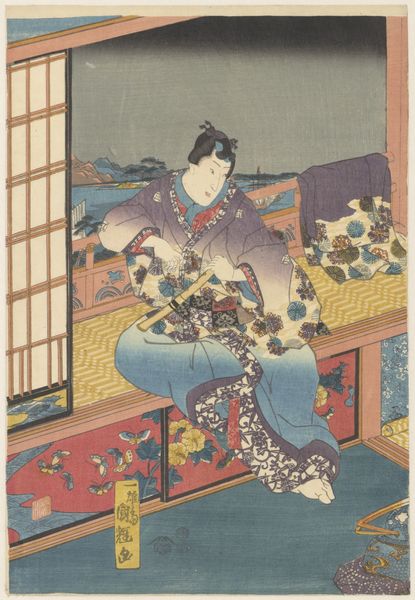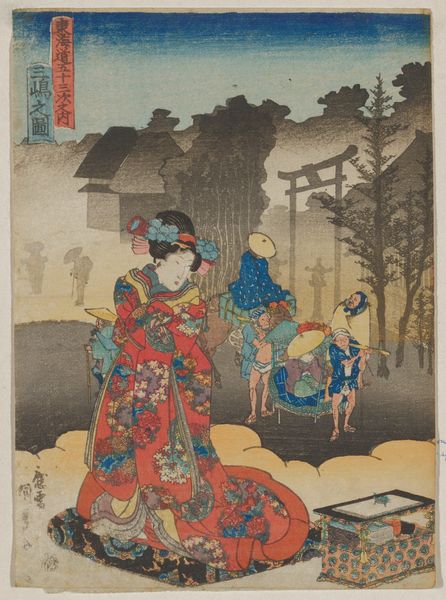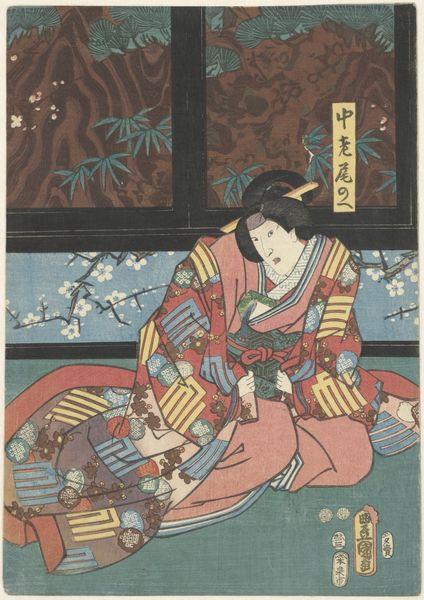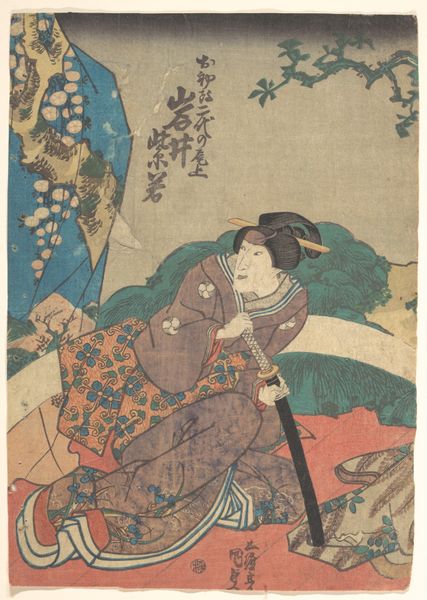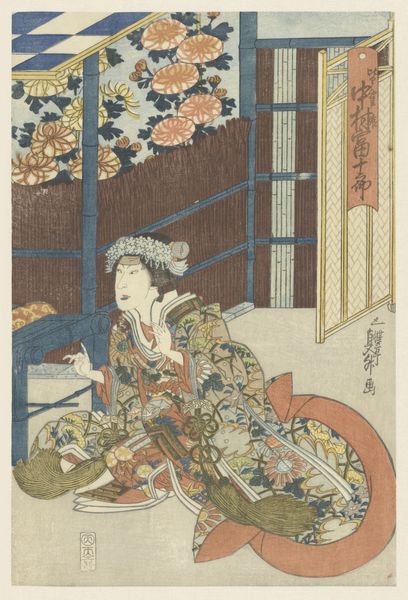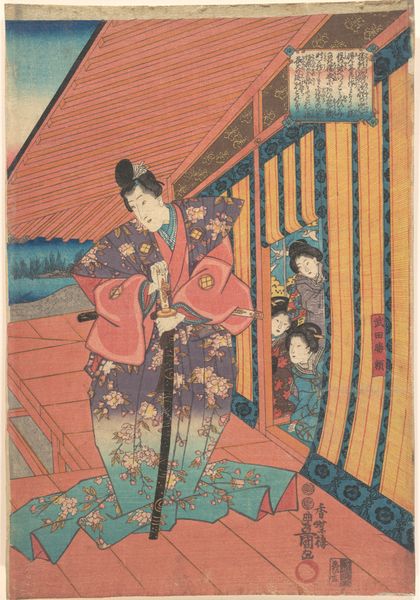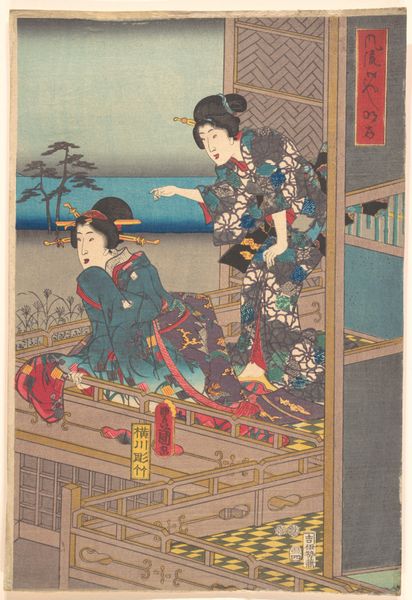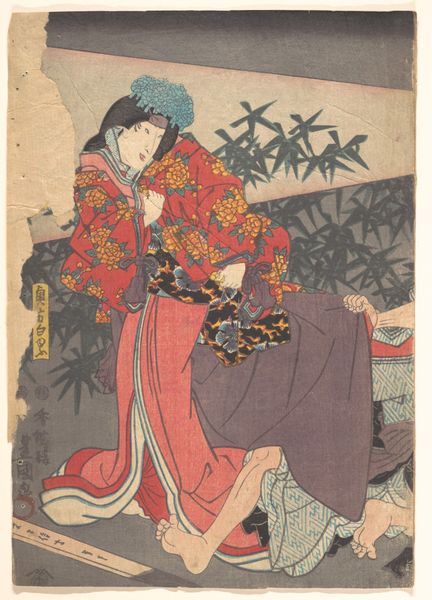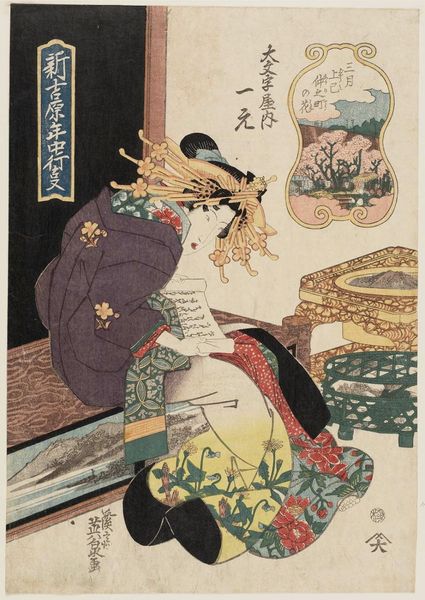
print, woodblock-print
#
water colours
# print
#
landscape
#
ukiyo-e
#
figuration
#
mural art
#
woodblock-print
#
watercolour bleed
#
watercolour illustration
#
watercolor
Dimensions: height 374 mm, width 255 mm
Copyright: Rijks Museum: Open Domain
Editor: Here we have Utagawa Kuniteru's "Bloemen," a woodblock print created around 1850. There's a feeling of anticipation here, a woman carrying what looks like a rolled-up screen or mat outside, with a building visible behind her. What can you tell us about this scene? Curator: This piece provides us with an intimate snapshot of Edo-period life, doesn't it? Consider the social context. The woman, likely associated with the pleasure quarters, is depicted in a moment of transit. This raises questions about her agency within that environment. What is she carrying? What could that symbolize for you, in this transient moment, of perhaps movement and potential change, and even possibly the boundaries placed upon women's movement? Editor: I hadn't thought about it like that! I was focused on the domesticity of the scene, the garden and the architecture. Curator: Yes, but that domesticity is also a constructed space. Think about the Ukiyo-e tradition itself. It flourished in parallel with a rising merchant class and evolving cultural norms, also shaped by strict social codes and class boundaries, particularly for women. How does her gaze out of the picture frame connect with contemporary feminist viewpoints about self-representation? Editor: So, it's not just a pretty picture. It is part of a cultural and political statement of Japanese society at the time it was made? Curator: Exactly. We must engage critically with the past and unpack embedded social dynamics and ideologies related to gender and identity, because even then, and definitely now, things were in transition. How are women navigating shifting circumstances? That makes art history relevant now, and allows us to see echoes of this moment in the issues that challenge us now. Editor: I see the scene in a different light now. Thank you for connecting that moment in Japanese history to where we are today. Curator: My pleasure. Let’s keep looking at art with critical and informed perspectives.
Comments
No comments
Be the first to comment and join the conversation on the ultimate creative platform.
